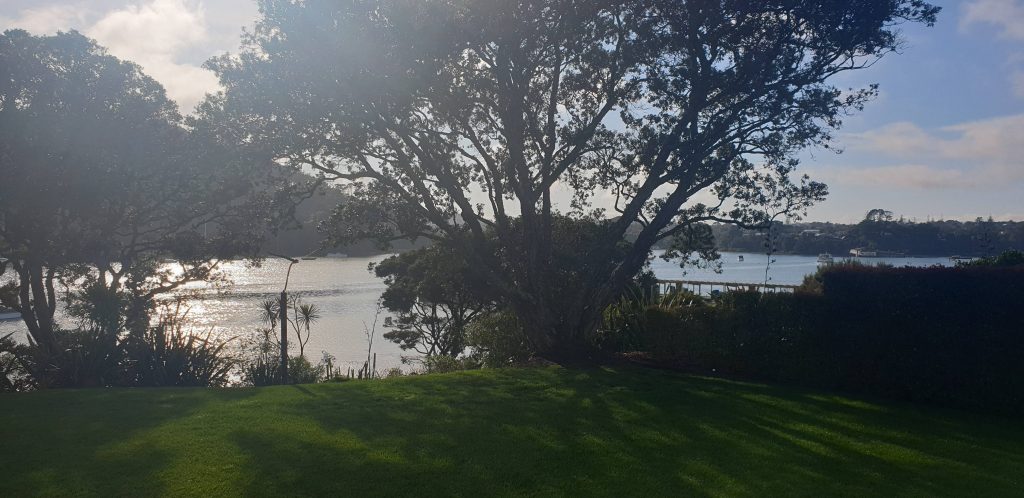I was sitting and having my coffee as I watched the water at Hobsonville Point, with nothing but a few birds moving about. It is so unlike a normal Sunday morning when we would see the rowers out training, a few paddleboarders and kayaks cruising on by, the junior sailors on the water and some larger yachts heading somewhere for the day, some boats heading out for a fish or anchored up and fishing here, and then of course those jetskis that so often do not know the boating rules.
There is always something happening, but not while we are back in lock-down.
It’s quiet on the water today.
Some people may think that this is how it once was – that the Upper Harbour was and even should be a peaceful part of the harbour. I know as I am out waterskiing that people may prefer the peaceful sound of a paddle slicing the water or the wind in the sails. But getting on the water is always a good way to clear the head no matter what type of craft you are on.
You could say for many people the harbour is their “happy place” and you can leave the stresses of life on shore while you are doing your thing on the water.
It’s also interesting to learn about the history of our special piece of water … the Upper Harbour.
The Upper Harbour Transport Link
Looking back over history the Upper Harbour has always been a place where boats of all shapes and sizes have moved about.
The Upper Harbour was thought of as a river and at the head (top) of the river is a settlement known as Riverhead. This is 31km from central Auckland, but as you travel up the harbour it can seem a world away. This was a vital transport link with Helensville and the Kaipara.
For centuries, local Maori used the Upper Harbour when travelling north and south, heading to the river head and then dragging their waka across from the Kumeu River to the Rangitopuni River so they could continue on to Helensville and the Kaipara harbour. They could then head north to Port Albert, Kaiwaka or Dargaville all in the relative safety of the inner harbour.
Later the European settlers used the waters of the Upper Harbour as a transport link too. It was the easiest way to access and transport the produce grown locally and needing to get to the markets. In the early days this was the timber that was needed for building in Auckland and flax was a big industry used for ropes and then Kauri gum was discovered. Later the wider area from Riverhead through to Kumeu and beyond was planted with many market gardens, crops, vineyards and orchards being established. This was one of the first areas where wine was made in New Zealand and “healthy” tobacco was also established at Riverhead.
As road and rail was developed the Upper Harbour became less vital for traders, but remained a safe and protected place for boaties.
As you head up the harbour you will see literally hundreds of yachts and launches on moorings in very protected waters around Beachhaven, Hobsonville, Herald Island and Greenhithe.
There are now boat tours that head from Auckland city to Riverhead most days and they will share much of the history as you go.
People Have Renewed Respect For Upper Harbour
For people that use the water in Upper Harbour today it is good to see that they respect that it is a special place, and also understand that it needs to be looked after.
I’ve heard that it once was quite a mess.
In the decades past people would tip rubbish over the back fence and it would end up in the harbour. Chemicals and waste was discarded and again ended up in the harbour. Of course we can blame these people, but in reality this was something that people just did not consider at the time.
But it is great to see the efforts that people have gone to over recent years to clean up the harbours and today we have the benefit of a much cleaner and yet still a very accessible piece of water to enjoy.
One of the aims for the future is to ensure that we can all enjoy the Upper Harbour and it will be great to see the new wharf at Hobsonville to enable better access for future generations too.
